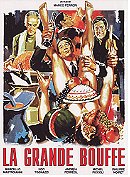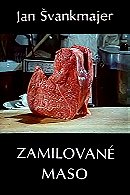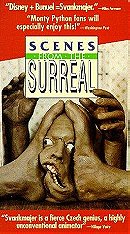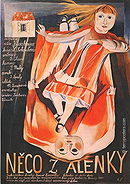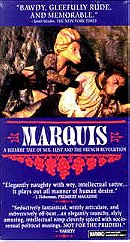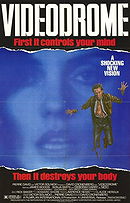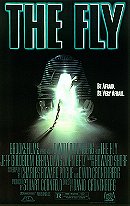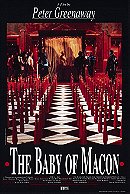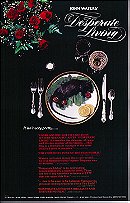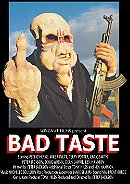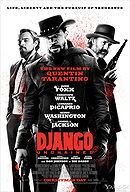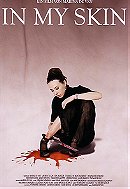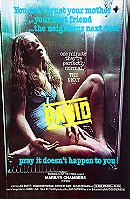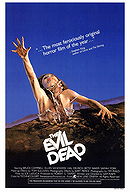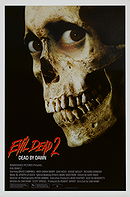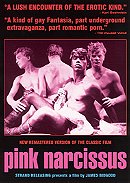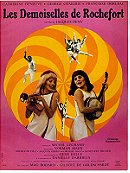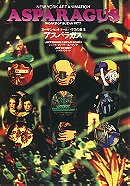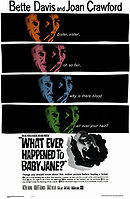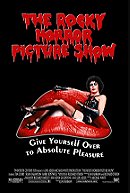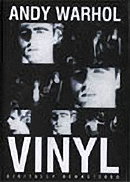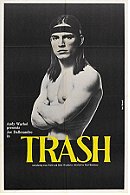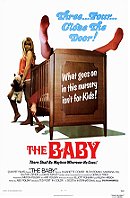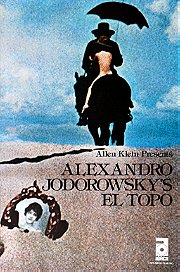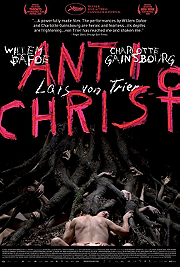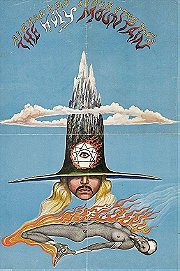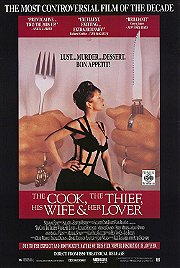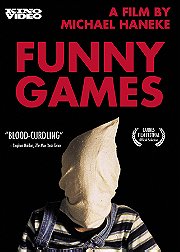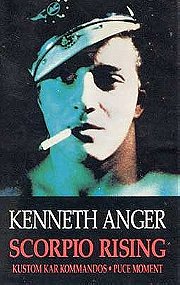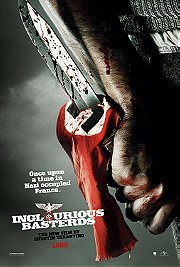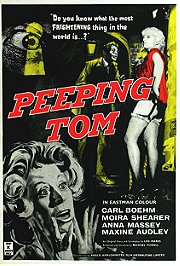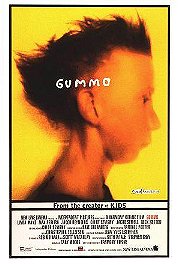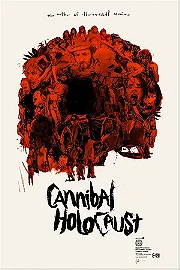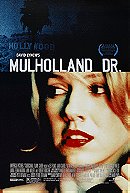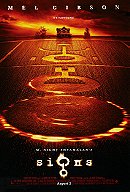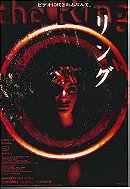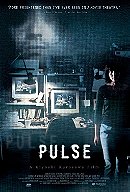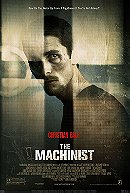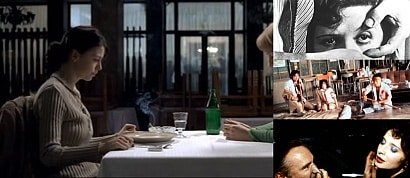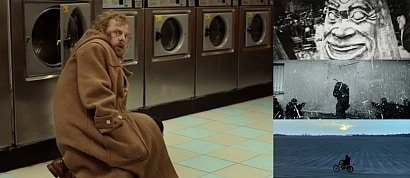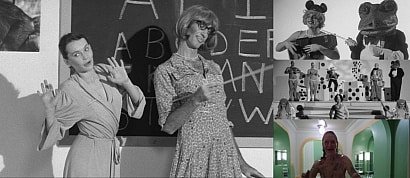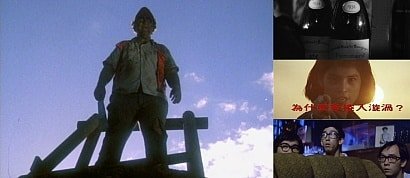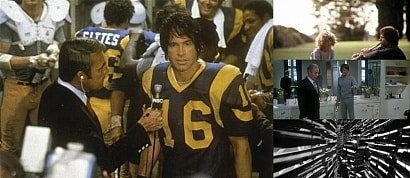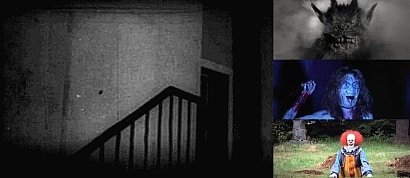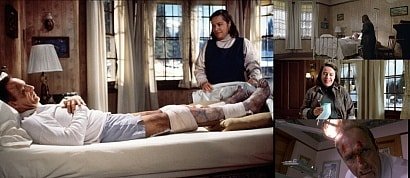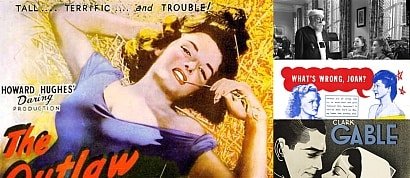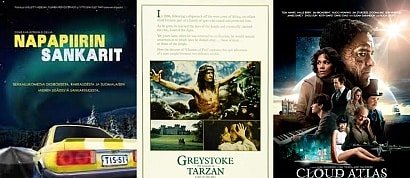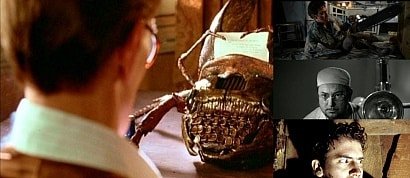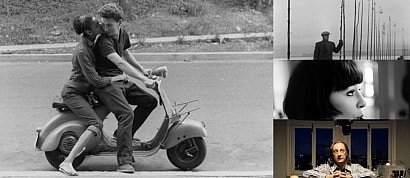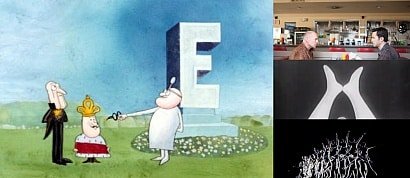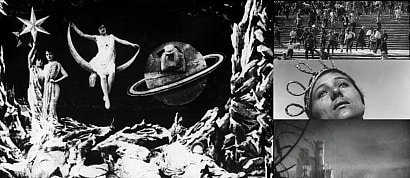Ugliness and demeasure in cinema
Sort by:
Showing 1-50 of 120
Decade:
Rating:
List Type:
 Add items to section
Add items to section
Grotesque
Let's deal with the abject itself, in one of his most interesting forms : the grotesque. According to Mikhaïl Bakhtine, grotesque is a take on the reality. It is a reality in constant transformation. It reveals the incompletude of the body, dealing with our taboos over it.
A mixture of tragic and comic, but which means more than the addition of these two feelings. In brief, it's the subversion of spirituality, the abolition of order for the perspective of a (joyous) chaos.
A mixture of tragic and comic, but which means more than the addition of these two feelings. In brief, it's the subversion of spirituality, the abolition of order for the perspective of a (joyous) chaos.

The perfect example of what grotesque actually means. Ugliness is celebrated in a pure, carnivalesque way. Grotesque is a spectacle. John Waters deals with what we usually don't want to see (shit, blood, dirt, vomit, etc.) and put it in our faces, with the pretext of making us laugh.
natha3l's rating:


The Big Feast (1973)

Food is a fertile ground for grotesque. Food means orifices (to enter and to exit), food means also uncompletude (we need to devour the Other to live). La Grande Bouffe is a dark party where everyone eats to excess. The characters burst : pushing too far, they can't help but explode.
natha3l's rating:


Darkness/Light/Darkness (1989)

Svankmajer clay animations are a perfect way to remember us our corporality. The body is morceled, crushed and in constant mutation.
natha3l's rating:



In fact, stop-motion animation, when not polished, deals a lot with grotesque. The dead body, the empty object, live artificially, as if he is not really dead, as if he opens us to another terrifying world where the dead can move. The bunny, in the Svankmajer version of Alice in Wonderland, seems grotesque because he looks dead and alive at the same time.
natha3l's rating:



Marquis is also a kind of strange mixture. The characters, based on Marquis de Sade's universe, are all played by animals, but fake animals, puppets. What is strange is that these animals are anthropomorphic. They act like humans, their posture is human and their hands are, in deed, real human hands.
natha3l's rating:


Videodrome (1983)

Wolfgang Kayser defines grotesque as the emergence of corporality of human. Showing flesh and the "incompletude" of the body, Cronenberg often go grotesque in his cinema, in a a Freudian way.
natha3l's rating:


The Fly (1986)

In The Fly, Cronenberg goes precisely on the dark side of grotesque, showing secretions, fluids, organs, flesh, everything that we reject from our perception of the world.
natha3l's rating:



Cripples, because they seem incomplete to the psyche, are often the representatives of the grotesque. They can be laughed at or pitied on, but they sureley make us realize our corporality.
In this Greenaway film, the omnipresence of death in the frames, the obsession of the characters of their own death and that of animals, could be elements of a dark grotesque.
natha3l's rating:



Peter Greenaway is a stong fusion of grotesque images, theatricality and baroque or architectural construction of frames. In this film, sexuality and blood often share the screen, and the artificiality of the film (showing a double story, the play and the backstage of it) deals with the strong ugliness of some images.
natha3l's rating:


The Devils (1971)

Nudity, blood, sex, hate, hystery and shenanigans, all this mixed with religion, with a particularly dark humor. By moments, Russell reminds me Greenaway.
natha3l's rating:


Parlez-nous d'amour (1976)

A particularly cruel view on the world of afternoon television. Odious singers, lustful producers and rude old ladies. Characters are monstruous, but we still laugh a lot. Cynism at his best. A strong and surprising Michel Tremblay scenario.
natha3l's rating:


Desperate Living (1977)

In Waters cinema, the extreme theatricality of the characters plays with grotesque. Desperate Living is one of his most carnavalesque movies.
natha3l's rating:


 Add items to section
Add items to section
Gore / Splatstick horror
Gore has something to do with grotesque, because it reveals the incompleteness of the body and his constant moving. It's a monstation of the body, flesh, organs, for taking mesure of the reality of our imminent death. Gore is a spectacle, a show, established on our fascination for death, blood, for the «real» body.
Born from the fusion of "slapstick" and "splatter", the term "splatstick" refer to an exageration of the repulsive horror in a comedic intention.
Born from the fusion of "slapstick" and "splatter", the term "splatstick" refer to an exageration of the repulsive horror in a comedic intention.
Bad Taste (1987)

Bad taste is a key word to understand gore. Gore must be tastefully bad, but in a interesting way. A film which only show flesh and organs is not really interesting. It's the way the director leads to this blood, flesh, organs, which is appealing.
natha3l's rating:


Django Unchained (2012)
Tarantino isn't a classic "gore" director, although his work contains some interesting gore scenes, and shows a interesting side of what gore truly is. Gore is the show, the spectacle of flesh, blood, kill. The ending scene of Django contains a lot of this kind of gore. The intelligence of the director is to make us wait for this blood, since the beginning of the movie, focusing on revenge and constantly delaying it, as in Inglorious Basterds.
natha3l's rating:


Ichi the Killer (2001)

Gore is often affiliated with porn (in this sense, the new cinematic category of torture porn isn't an accident) : it's because the effects seems to be the same. In gore, orgasm is replaced by the explosion of the body, the reveal of its interiority. In Ichi the Killer, Ichi is obsessed with the body. He wants to see blood, but more than this, violence, torture, suffering. It kind of overflows the motive of gore.
natha3l's rating:



In In My Skin, director Marina de Van explores the relationship between the spectator and the body on screen. Her character, Esther, become obsessed with her own skin, wanting to keep it, to own it, to remove it from herself. Pushing the visual limits by showing blood, skin, scars and body mutilations, the film let us feel a strong tension, asking the question : What are we willing to see?
natha3l's rating:



Cronenberg is truly a master of what we call "body horror". In this film, as in much of the his films, we see progressively a virus mutating people into monsters.
natha3l's rating:


The Evil Dead (1981)

Gore isn't always funny, but when it is, it's because it pushes the boundaries of what is the body. Splatstick comedy is a way of showing too much, and in this too much we found joy, hilarity, because of the obvious grotesque of the situation. There is too much blood, flesh, horror in the scene to believe it.
natha3l's rating:


Evil Dead II (1987)

Evil Dead II is an interesting case. Recreating the original film, this one uses more special effects and add some truly gore and excessive scenes. This kind of overbidding satisfy the spectator, always eager for more.
natha3l's rating:


 Add items to section
Add items to section
Kitsch and "Camp"
Kitsch is assimilated to "bad taste" designed by upper classes. It's a form of imitation of aestetics canons, in a mercantile way. Kitsch is also the world of the object, an "empty" object, purely fonctionnal or representative of something (ex. : wax statues, ceramic reproductions of iconic images, etc.).
According to Susan Sontag, "Camp" is a form of reappropriation of bad taste (and sometimes "kitsch") by a new elite, born in the society of mass culture. It's also a form of dandysm which celebrates artificiality, the need of representation and sexual ambiguity.
For now, this section in really incomplete, but I'm beginning my research on the subject. If you have some suggestions, they are welcome.
According to Susan Sontag, "Camp" is a form of reappropriation of bad taste (and sometimes "kitsch") by a new elite, born in the society of mass culture. It's also a form of dandysm which celebrates artificiality, the need of representation and sexual ambiguity.
For now, this section in really incomplete, but I'm beginning my research on the subject. If you have some suggestions, they are welcome.
Pink Narcissus (1971)

A classic in what some have named "queer cinema", Pink Narcissus is an amalgam of colors, homoeroticism and highly aesthetic images. Representation of the Narcissus myth, Pink Narcissus show us an overload of artificial images stripped of their depth to go to a sophisticated emptiness.
natha3l's rating:


The Young Girls of Rochefort (1967)

The kitsch dimension of the Jacques Demy's films isn't unintentional. Behind an apparent lightness or naivety, one can see some strong issues. Here, for example, murder is treated in a overnaive way, songs, dance, rhymes. A form of nostalgia of the american musical (although Gene Kelly plays a little role in it). One must see the little parodic way Demy treats the musical genre.
natha3l's rating:



This strange mixture of genres (from "film noir" to horror film) became a cult classic by its ambiguity and, above all, the strange story behind it. The two stars, Bette Davis and Joan Crawford, who have always been strong rivals, are facing here in a dark tale a jealousy and hate. Elements of "camp" can be found here: the acting goes (too?) far, the presence of the actresses is strong, and to see Bette Davis, at her age, in this child dress, playing this crazy obsessional character, surely deals with some grotesque effect.
natha3l's rating:



This movie goes beyond description. Pure definition of "cult movie", The Rocky Horror Picture show is a musical parody of B-movies, mixing sci-fi and horror themes to create an enigmatic and androgynous world. The costumes are amazing, and Tim Curry is memorable in his role of Frank-N-Further, a "sweet transvestite, from Transsexual, Transsylvania".
natha3l's rating:



The classic novel from Anthony Burgess "A Clockwork Orange" is the starting point of this sophisticated filmic representation. Taking a distance from the Burgess' novel, Warhol's actors act in some kind of artificial way, dealing with sadomasochism and role-playing. The result is certainly disconcerting.
natha3l's rating:


Trash (1970) (1971)

This film from Paul Morrissey is interesting by its aestethics of ennui. Boredom is here a pose and an way to act, which is really near the classic definition of dandysm.
natha3l's rating:


 Add items to section
Add items to section
Transgressive cinema
Not to confound with the "Cinema of Transgression" (Nick Zedd), transgressive cinema is breaking the taboos and pushing the limits of the spectator. The torture porn genre may be added in this section, but transgressive cinema is not always related to physical pain: sex, ultraviolence, nudity, psychological threats, black humor or crude dialogues are also considered transgressive. It is, if one must say so, a kind of cinematic extremism.
 Add items to section
Add items to section
Uncanny
The Uncanny is a freudian concept (unheimlich in German) which means the intrusion of a foreign element into something we know really well. It is the menace of an alterity, of a danger, deeply inside us.
Mulholland Drive (2001)

The classic example to refer to the Uncanny is the curious scene at the Winkie's, in Mulholland Drive. A man talks about a recurrent dream he has, about a terrifying thing behind the restaurant. As he tells the dream, we feel a stange and progressively threatening ambiance.
When we confront, in the real world, the "thing" (the Uncanny), we collapse, as this character does.
natha3l's rating:


Blue Velvet (1986)

The Uncanny means the arrival of the Other in our reality, an Other who were not supposed to be there. In Blue Velvet, Jeffrey discovers a new, enigmatic world, through the discovery of an enigmatic element in his banal, perfect, life : an ear.

Psychoanalytic theories are often used to understand or analyze Lynch's cinema. For example, in Blue Velvet, we can link the closet sequence with the freudian concept of "primal scene". On this subject, one must read Todd McGowan, "The Impossible David Lynch".
natha3l's rating:


Signs (2002)

"Signs" is a key word for understanding the Uncanny. Elements, indices indicate us the possible existence of another reality.
natha3l's rating:


Ringu (1998)

What we generally call "horror film" often uses the Uncanny to immerse the viewer in another world, where fantastic elements (strange elements that seems to be out of our reality) are suddenly emerging.
natha3l's rating:


Pulse (2001) (2001)

The originality of this 2001 film is that he questions our relationship with technology. Somehow, technology becomes a kind of fantastic monster.
natha3l's rating:


The Machinist (2004)

In The Machinist, the character, who discovers he is getting thinner and thinner as the day passes, discover many strange things in his life and, after a certain time, is not able to distinguish his true reality and his fantasmatic reality.
Through the years, this way to play with two dimensions (dream and reality) has become almost a cliché in a certain kind of "psychological horror" films.
natha3l's rating:


Load more items (70 more in this list)
Preparing my master in cinema, I note in this list some films that I've seen or not, responding to some recurrent themes (or categories) in what I call "Cinema of the Ugliness" : grotesque, splatstick horror, repulsive horror, transgression, expressionism, kitsch or camp, gore, the uncanny. More categories may be added.
The term "demeasure" is here used in opposition with "measure" (respect of the rules, control, good proportions, etc.). In summary, one must understand demeasure as the bursting of the form, transgression of the cinematic rules (of the "classic" cinema) and breaking of the established order.
Please note that this list is a "work in progress". This is not an official list and my interpretations are not immuable or perfect. I make this list for pleasure, so don't be too severe.
If you have some suggestions, they will be welcome. I'm always eager to discover new directors or new movies. Also, the list will be updated regularly and modified. There's some films in this list that I haven't seen yet, so I will re-judge after seeing.
The term "demeasure" is here used in opposition with "measure" (respect of the rules, control, good proportions, etc.). In summary, one must understand demeasure as the bursting of the form, transgression of the cinematic rules (of the "classic" cinema) and breaking of the established order.
Please note that this list is a "work in progress". This is not an official list and my interpretations are not immuable or perfect. I make this list for pleasure, so don't be too severe.
If you have some suggestions, they will be welcome. I'm always eager to discover new directors or new movies. Also, the list will be updated regularly and modified. There's some films in this list that I haven't seen yet, so I will re-judge after seeing.
Added to
18 votes
Favorite lists published in 2012
(123 lists)list by Nusch
Published 7 months ago  1 comment
1 comment
 1 comment
1 comment11 votes
Favorite ARThmhd's lists
(28 lists)list by ARThmhd
Published 9 years, 1 month ago  2 comments
2 comments
 2 comments
2 comments25 votes
Drugs' Favorite Movie Lists
(29 lists)list by drugs
Published 13 years, 3 months ago  2 comments
2 comments
 2 comments
2 comments17 votes
Lists not to look at just before bed
(14 lists)list by Jane-ArtLover
Published 12 years, 2 months ago  3 comments
3 comments
 3 comments
3 comments11 votes
Favorite Lists: triple the awesomeness
(43 lists)list by Orlok
Published 12 years, 9 months ago  2 comments
2 comments
 2 comments
2 comments10 votes
(SFG) Favorite Lists
(28 lists)list by SFG¿mystic
Published 13 years, 2 months ago  4 comments
4 comments
 4 comments
4 commentsPeople who voted for this also voted for
Feed Your Dark Side
Downers...
Quotes About American Cinema
< 100: Overlooked, Intriguing or Boombastic!
The Bizarre, the Surreal, & the Downright Strange.
The Unknown Voice of Greek Cinema
Few things I love about cinema
Amazing Underrated Obscure Bizarre Films PART 12
My Brilliant and Witty 2013 Movie Diary
What the fuck is that??? (Updated)
Amazing Underrated Obscure Bizarre Films PART 11
This won't hurt a bit...(creepy docs/nurses)
Films Condemned by the Legion of Decency
Cinema & Its Wonders
Anno Cinema 2013
More lists from natha3l
30 Day Horror Challenge
A Subjective List of Quebec Films
2013 Movie Diary
50 Essential Films
My 30 Day Movie Challenge
Acting Performances
 Login
Login
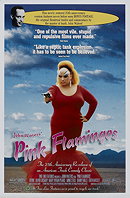
 658
658
 6.4
6.4
 6
6
